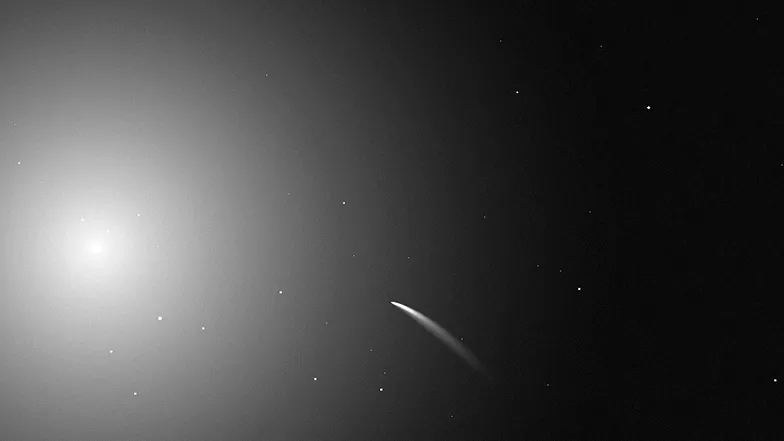
G3 ATLAS: The Once-in-a-160,000-Year Comet Set to Dazzle Early Next Week
2025-01-09
Author: Ting
A Rare Visitor from the Oort Cloud
G3 ATLAS is not just any comet; it's a rare visitor that could only appear once every 160,000 years. Preliminary measures indicated it was coming from the Oort Cloud, a realm of icy objects surrounding our solar system. However, tweaks to its orbit revealed that G3 ATLAS is an ancient comet, having survived at least one previous close pass to the sun, thereby boosting hopes for a spectacular display.
Southern Hemispheric Advantage
Unfortunately, the comet's trajectory primarily favors observers in the Southern Hemisphere, where it has traversed through constellations like Lupus and Scorpius. This leaves northern skywatchers with a tough challenge, as the comet's low position in the southeastern horizon puts it in jeopardy of being hidden by morning twilight. Nevertheless, the comet's course is changing, offering a narrow window for northern observers to catch a glimpse.
Outburst and Uncertainty on Survival
January 2, 2025, marked a significant moment when G3 ATLAS experienced a sudden outburst that nearly quadrupled its brightness. Two noted comet observers, John Bortle and Nick James, have expressed mixed feelings about the comet's stability. With Bortle estimating survival odds at around 50%, and James noting the comet continues to brighten despite concerns, the fate of G3 ATLAS hangs in a delicate balance.
Will It Dazzle?
As G3 ATLAS approaches perihelion on January 13 at a distance of approximately 8.7 million miles from the sun, estimates suggest it could reach a brightness between -3.2 to -6. If the latter holds true, the comet could eclipse Venus in brilliance! However, its proximity to the sun raises concerns about visibility amid bright twilight.
When and How to Catch a Glimpse
Keep your eyes peeled for a three-day window from January 12 to 14 for a chance to spot G3 ATLAS. On January 12, look to the east-southeast horizon about 25 minutes before sunrise, while on January 14, try scanning the west-southwest skies about 10 minutes after sunset. Essential viewing equipment includes good binoculars, preferably 7x50 or larger, to enhance your chances of spotting this cosmic wonder. For optimal location, seek a viewpoint with an unobstructed horizon or even head to elevated ground where you can reduce obstructions.
Dangerous Daytime Viewing
The most significant spectacle could occur on January 13 when the comet reaches its predicted peak brightness. However, be warned: attempting to view it during daylight carries dangers, as it will be near the sun. Staring directly at the sun—even momentarily—can inflict permanent eye damage.
How to Safely Follow the Action
The safest way to enjoy this celestial phenomenon is through live feeds provided by space observatories like the SOHO (Solar and Heliospheric Observatory). This system will capture images of G3 ATLAS as it glides past the sun. With great possibility comes great anticipation, so mark your calendars, prepare your binoculars, and stay updated—this could be the event of a lifetime! 🌌✨

 Brasil (PT)
Brasil (PT)
 Canada (EN)
Canada (EN)
 Chile (ES)
Chile (ES)
 Česko (CS)
Česko (CS)
 대한민국 (KO)
대한민국 (KO)
 España (ES)
España (ES)
 France (FR)
France (FR)
 Hong Kong (EN)
Hong Kong (EN)
 Italia (IT)
Italia (IT)
 日本 (JA)
日本 (JA)
 Magyarország (HU)
Magyarország (HU)
 Norge (NO)
Norge (NO)
 Polska (PL)
Polska (PL)
 Schweiz (DE)
Schweiz (DE)
 Singapore (EN)
Singapore (EN)
 Sverige (SV)
Sverige (SV)
 Suomi (FI)
Suomi (FI)
 Türkiye (TR)
Türkiye (TR)
 الإمارات العربية المتحدة (AR)
الإمارات العربية المتحدة (AR)